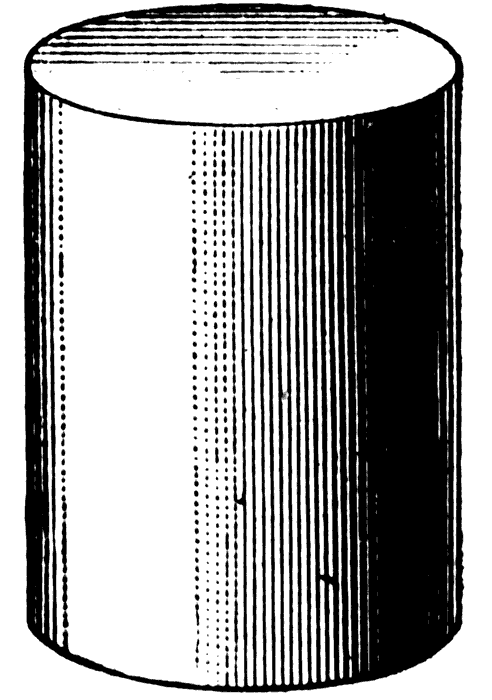|
|
LITR 5431
Literary & Historical Utopias
|
|
Robin J. Hall
Jane Addams’s Hull House: A Feminist Utopia or a
Model for the Twenty-First Century?
In my first research post, I looked at some of the people
who influenced Charlotte Perkins Gilman in
writing Herland.
One of those people was Jane Addams, the founder of the Hull House
settlement project, which Gilman herself lived in for almost a year. In my
midterm paper, I looked at several historical utopias and noticed that the most
all-encompassing utopias, like the Oneida Project, were the least successful,
while smaller utopian projects like bike-sharing systems and community food
forests, which focused on utopian attempts to redesign only one element of a
community, appeared to be much more successful. Jane Addams’s Hull House falls
somewhere between the extremes, as Addams did create a whole utopian community,
but that community was not isolated. It lived within its surroundings and was
able to adjust over the years to meet the needs of the community. In her memoir,
Addams wrote “[t]he only thing to be dreaded in the Settlement is that it loses
its flexibility, its power of quick adaptation, its readiness to change its
methods as its environment may demand” (1910, 56).
Addams’s vision for her project was a belief, like Abraham
Lincoln’s, that a democracy could not succeed if the citizens accepted being
divided into “classes.” She said “[o]ur democracy is still our most precious
possession, and we do well to resent any inroads upon it, even though they may
be made in the name of philanthropy.” (Addams 1910, 21). She wanted to help
well-off intellectuals like herself put their beliefs into action; to show that
the “dependence of the classes on each other is reciprocal” (Elshtain 1997,
110-111). The idea of the settlement house was to erase the sense of “moral
superiority” that many of these people came to the project with, and also to
change the misconceptions that working class people often had about wealthier
people (Knight 2012). This was why it was so important for the “settlers” to
actually live in the poorer communities and have the working class people as
neighbors. Some volunteers lived there for many years, while others came only to
help with some of the many activities at the house.
Just like utopian authors and their
literature of ideas, Jane Addams was providing a template of ideas that she
hoped would catch on in small or large part and help make the world a better
place for everyone. You can’t get any more utopian than that.
Addams once described Hull House as “an experimental
effort to aid in the solution of the social and industrial problems which are
engendered by the modern conditions of life in a great city” (1910, 55). The
initial charter included purposes such as “to provide a center for a higher
civic and social life, to institute and maintain educational and philanthropic
enterprises, and to investigate and improve the conditions in the industrial
districts of Chicago” (Addams 1910, 49). While the latter purpose is perhaps
what the movement is most well known for, the first two are directly in line
with utopian community ideals. What started as a residential project to help
intellectual women apply their learning to the real world became a citywide
social justice movement to help meet the needs of the poor in such diverse areas
as job training, food security, and the arts, and that has influenced social
work education around the country. The project was able to change with the needs
of the community, just as Addams had hoped. In her journal, Addams stated
“life is a quest, and a life of virtue lies within one’s reach if one emulates
exemplary individuals” (quoted in Elshtain 1997, 107). In other words, Addams
was trying to live right, which at its core is the reason for the creation of
all utopias.
Addams grew up idolizing Abraham Lincoln (Addams 1910,
14-21; Elshtain 1997, 107) and says that she knew from a young age that she
wanted to live among the poor and help them, although she resisted the attempts
of her teachers at Rockport Seminary to steer her into mission work (Addams
1910, 24). On Addams’s second trip to Europe while recuperating from serious
health issues, she developed an idea with her friend Ellen Starr to move into a
house in the poor area of the city and put her principles to work.
She visited Toynbee Hall settlement house in London to see how it
operated (Addams 1910, 39-40). In late 1889, she and Starr leased part of a
large house on the west side of Chicago that had been built by William Hull as a
country mansion but had been overtaken by the city (Addams 1910, 43). In her
memoir, Addams described the neighborhood as characterized by what we now call
“white flight,” with English-speaking families moving away as soon as they could
afford it and new immigrants moving into the low-rent district. She described
the intellectual programs they were able to offer at Hull House as an oasis for
educated residents who found themselves impoverished and an opportunity for
those who had been forced to leave school early to go to work. One of the
former, an early resident of the house, had spent time at Brook Farm with
Nathaniel Hawthorne in years past and said she wanted to rediscover that
“atmosphere of idealism” (Addams 1910, 45). The Irish poet W.B. Yeats once
visited Hull House and orated on their little stage (Addams 1910, 158). The
Chicago Arts and Crafts Society got their start at Hull House. Because of their
community of Russian immigrants, Hull House not only hosted refugees from the
Russian Revolution, but also brought speakers to discuss it, ranging from a
member of the Russian Duma to a high-ranking former revolutionary to a former
aristocratic prisoner of the government (Addams 1910, 161). Hull House offered
activities for all ages, as part of Addams’s goal was to engage the people in
becoming a community (Addams 1910, 48). The projects included clinics, drama
classes, day nurseries, lectures, and an immigrant arts and crafts museum, to
name only a few. The resident intellectuals also used their experiences to
compile studies on urban housing, hygiene, employment conditions, and
prostitution (Elshtain 1997, 111).
In addition to the contemporary social and intellectual
benefits provided by Hull House to the surrounding community, it left some
lasting marks on Chicago and the nation. Addams was a supporter of the labor
movement, although she believed in a more cooperative means of action and
strongly disapproved of strikes as damaging to the vulnerable workers they were
intended to benefit (Deegan 1988, 236). This was tied to her belief that the
classes were not in opposition to each other but were all a necessary part of
democratic society. Addams was a firm believer in nonviolent solutions to
problems, and she encouraged face to face debate to help people on both sides of
an issue, such as labor conditions, to see and hear the other side (Elshtain
1997, 112). Because most unions in Chicago did not allow women, Hull House
served as home for the Cloakmakers’ Union, the Shirtmakers’ Union, and the
Chicago Women’s Trade Union League (Deegan 1988, 236).
Addams noticed that, during a strike at a shoe factory, the most
vulnerable workers were single young women who were responsible for their own
rent payments. Collectively, the Hull House community determined to develop a
“boarding club” that would provide apartments for women who were out of work due
to a labor strike. After three
years, the “club” had 50 members and 6 apartments (Gross 2009, 89).
Chicago icon “The Second City” and its improvisational
art owe their roots to a teacher of “theater games” at Hull-House named Viola
Spolin. A child of Russian-Jewish immigrants, Spolin, who was born in 1906,
studied progressive education methods for 3 years at Hull House in the
1920s. As a young mother in the 1930s, Spolin studied dramatics at DePaul
University and hosted “improvisation nights” for her friends at her home. After
her divorce in 1934, Spolin and her two children lived in a communal house with
other young divorced mothers that they dubbed “The Educational Playroom.” They
pooled their assets to hire a cook and shared childcare
responsibilities for all the children. From 1937 to 1941, Spolin taught
dramatics and improvisational games at Hull House and around the city (Viola
Spolin website, n.d.). A 1940 Sunday
Times Magazine review of a children’s performance at Hull House read:
Organized recreation for children takes many unique
forms, none more unique than what is being done at Hull House. Aimed at stirring
creative ability inherent in all children, it’s a program of unorthodox drama
that hews to no lines, knows no cues, and never heard of a rehearsal. The
youngsters are given a bare idea, characters are chosen and the impromptu play
begins. It’s fun, stimulates reading, eliminates the ‘dis, dat and dose’ from
the children’s speech. Are these young thespians good? ‘They’re the finest
ad-libbers the stage has seen,’ says Director Viola Sills Spolin. (Viola Spolin
website, n.d.)
Spolin and Addams shared a belief in the value of play
for its creative and educational value, and as a way of providing constructive
activities to fill children’s time. Play provided ways for children to process
the difficult realities of the world around them (Goodson 2015, 31-32). Spolin’s
son, Paul Sills, took the games he had learned from his mother to the University
of Chicago, where he founded “The Playwright’s Theater” and “The Compass
Players.” In 1960, Sills and a partner founded the iconic “The Second City” and
began holding improvisation workshops there (The Second City website, n.d.). As
Ann Goodson wrote in her 2015 Master’s thesis “When examining the intelligent,
self-aware, defiant satire produced at Second City, it is difficult to not
observe shades of Spolin’s work with immigrant children and families at
Chicago’s Hull House; both encouraged actors to perform improvisation based on
their own life experiences and to comment on social issues with which they were
compelled” (2015, 46-47). During the early years of “The Second City,” Spolin
herself led a number of improvisation workshops there. Her political influence
lingers, mingled inextricably with Addams’ own, as “The Second City” still
produces politically and socially relevant shows that are accessible to a wide
audience (Goodson 2015, 44).
In addition to revering Lincoln, Addams was also
influenced by many members of the Chicago school of sociology, and she was
equally responsible for influencing them, although she gets little credit for
it. She clearly had read Jacob Bachofen, Friedrich Engels, and Otis Tufton
Mason, anthropologists who studied the role of women in matriarchal societies
and helped develop a school of thought called “cultural feminism,” which was
widely accepted by (primarily) female sociologists around the turn of the
century (Deegan 1988, 225-226). In a very broad nutshell, Addams believed that
women were culturally superior to men and society would benefit from more of the
feminine, cooperative, interactional, and family-centered ideals and less of the
competitive and warlike masculine ideals. Mary Jo Deegan believes one reason
Addams’s concept of cultural feminism did not last, despite its widespread
popularity for a brief period of time, was that she based much of her theory on
biological determinism, that women were “made” to do things a certain way.
Deegan also noted that Addams did not fully understand the way the patriarchy
worked, shown by how viciously she was attacked for her pacifist activism during
World War I (1988, 242). By the end of
the war, “she concluded that any state founded on nationalism and militarism was
incompatible with genuine social progress, perhaps even with democracy”
(Elshtain 1997, 112). Despite earning the Nobel Peace Prize in 1931 for her
pacifist efforts (Nobel Prize website, n.d.), and despite her now-recognized
contributions to the Chicago school of pragmatist sociology (Deegan 1988, 248),
it can hardly be a surprise that Addams remained unacknowledged in the academic
field and unpopular politically for the remainder of her life (Deegan 1988,
243).
Addams was not the only proponent of the settlement
movement. In her memoir Twenty Years at
Hull-House, she recounts attending a conference about social justice in
Plymouth, Massachusetts, in 1892, at which the settlement movement was
discussed. Some like-minded individuals included Robert Woods, who had stayed at
Toynbee Hall and was starting a settlement project called Andover House in
Boston; and Vida Scudder and Helena Dudley from The College Settlement
Association; as well as Julia Lathrop and Addams from Hull House. She noted
that, while they were all young and idealistic at the time of the conference,
they all remained active in the settlement movement for the subsequent eighteen
years (throughout the time covered by her memoir) (Addams 1910, 50). A common
thread in their ideology, she noted, was a shared interest in “socializing their
democracy,” in the brotherhood of all, and in putting their social justice
ideals to use (Addams 1910, 51).
An interesting addendum to my first post is the
revelation that Addams and Charlotte Perkins Gilman were lifelong friends, not
just colleagues. During Gilman’s brief tenure at Hull House, she gave lectures
on the labor movement, the advancement of women, childhood, social organization,
the “body of humanity,” and social ethics. She also participated in a protest
against sweatshops with Addams. Gilman’s book
Women and Economics is revealed to
have been widely read at Hull House, by both the staff and the residents (Deegan
1988, 229). It is interesting that in 1913, two years before the publication of
Herland, Addams published an article
in The Ladies Home Journal entitled
“If Men Were Seeking the Franchise.” In it, women in an imaginary matriarchal
society debated the benefits of giving men the vote, pointing out that men’s
carelessness about things like household cleanliness applied to their work in
factories, where they would be unlikely to care about letting textile workers
inhale all the tuberculosis-causing dusts (Deegan 1988, 230).
When Hull House was shuttered for lack of government
funding in 2012, Louise Knight, a writer for
The Nation, suggested that our modern
society might benefit from following Addams’s lead and looking for new ways to
“come together on the common road” (2012). Jean Elshtain also suggests that
Addams’ seemingly naïve solutions to thorny political problems, like
face-to-face conversations, might in fact provide a useful alternative for
today’s intransigent problems (1997, 112). Addams’s project lasted over 100
years. That it finally shut its doors due to a lack of government funding,
rather than lack of participation, indicates a flawed economic model but not a
flawed philosophic model. Jane Addams’s utopian ideals and ideas were never more
important than now.
References
Addams, Jane.
Twenty Years at Hull House. New York: The Macmillan Co., 1910. New York:
Open Road Integrated Media Inc., 2016. Adobe Digital Editions EPUB.
Deegan, Mary Jo.
Jane Addams and the Men of the Chicago School, 1892-1918. New Brunswick, NJ:
Transaction Books, Inc., 1988.
Elshtain, J.B. “A Return to Hull
House: Reflections on Jane Addams.” Feminist Issues 15, Issue 1-2 (March 1997):
105-113.
https://doi.org/10.1007/BF02860611.
Goodson, Ann. “The Settlement
Stage: How Hull House Bridged Leisure, Creativity, and Play.” Masters thesis,
Loyola University of Chicago, 2015.
https://ecommons.luc.edu/cgi/viewcontent.cgi?article=3890&context=luc_theses.
Gross, Matthias. “Collaborative
Experiments: Jane Addams, Hull House and Experimental Social Work.” Social
Sciences Information 48, no. 1 (2009): 81-95.
https://doi:10.1177/0539018408099638.
Knight, Louise W. “As Chicago’s
Hull House Closes Its Doors, Time to Revive the Settlement Model?”
The Nation. January 25, 2012.
https://www.thenation.com/article/chicagos-hull-house-closes-its-doors-time-revive-settlement-model/.
“Biography.” On Viola Spolin’s
official website. Accessed March 29, 2019.
https://www.violaspolin.org/bio/.
“Viola Spolin: The High Priestess
of Improvisational Theater.” The Second City (website). Accessed March 29, 2019.
https://www.secondcity.com/viola-spolin/.
“The Nobel Peace Prize 1931.” The
Nobel Prize Website. Accessed March 29, 2019.
https://www.nobelprize.org/prizes/peace/1931/summary/.




